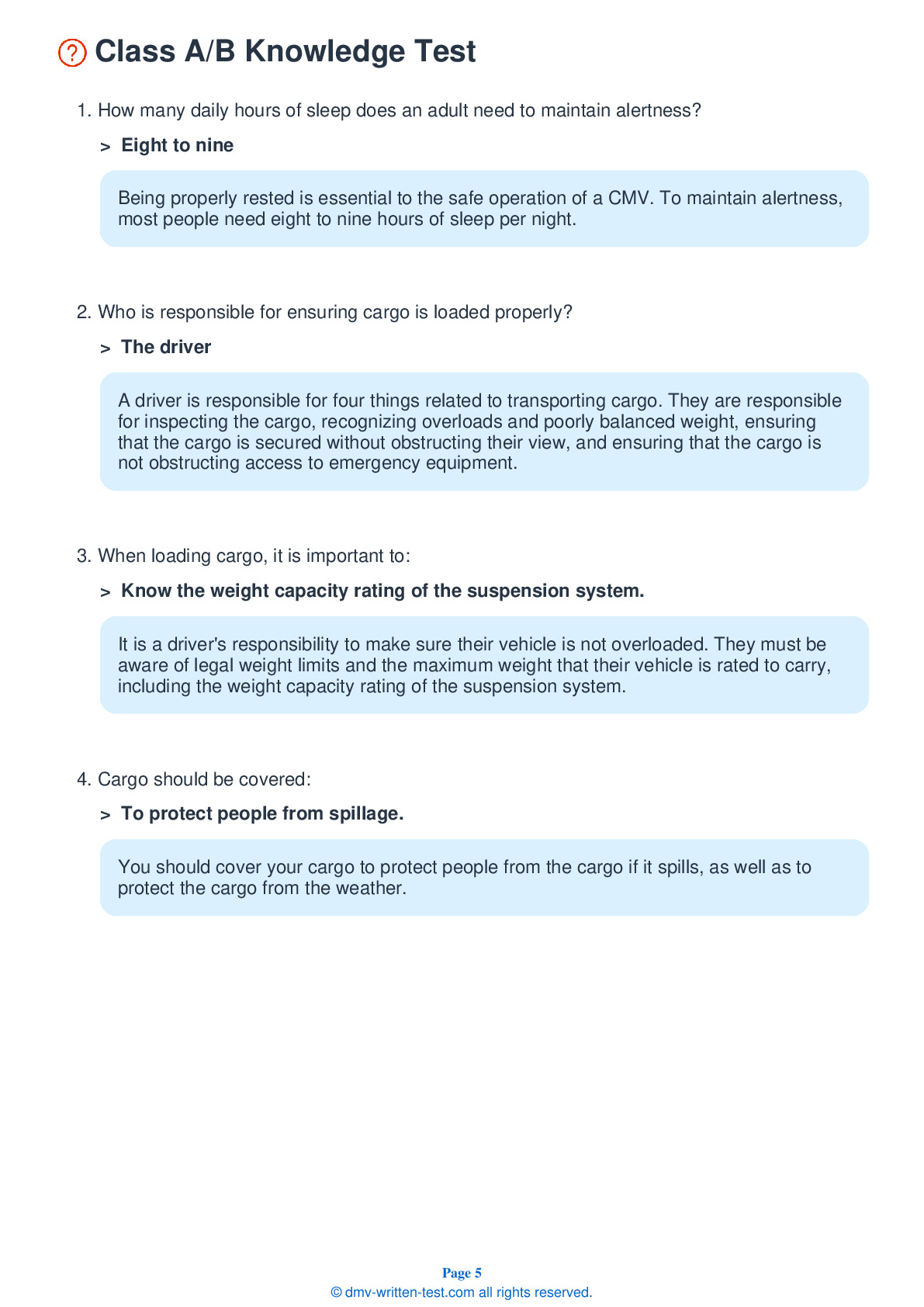Air Brakes
This endorsement is required for driving a vehicle with air brakes. To receive this endorsement, applicants must pass a written test. The test consists of 25 multiple choice questions. Each question has four answer choices. To pass, the applicant must answer at least 20 questions correctly. Test questions come from the Washington D.C. Commercial Driver License Manual. Questions come from the chapter covering: Air Brakes. The Air Brakes endorsement may be used with the Class A, B or C CDL.
Number of Question
Passing Score
1. Friction inside a brake drum is caused when the brake shoes and linings:
Explanation
Friction inside a brake drum is caused when the brake shoes and linings push against the inside of the drum. The friction in the drums will slow and stop the vehicle.
2. If a vehicle has air brakes, the air compressor drive belt should be checked before each drive. In what condition should the belt be?
Explanation
When inspecting a vehicle with air brakes that has a belt-driven air compressor, you should check the condition and tightness of the belt. It should be in good condition.
3. What is brake lag?
Explanation
Because air takes time to flow through the air lines to the brakes, air brakes cannot begin working instantly. There is often a brake lag of at least one-half of a second between the moment the brake pedal is pressed and the moment the brakes begin to work. On vehicles with hydraulic brakes, the brakes work instantly when the pedal is pressed.
4. When the spring brakes are activated in a vehicle with air brakes, you should never:
Explanation
In a vehicle with air brakes, never push the brake pedal down when the spring brakes are activated. The combined force of the springs and the pressure of the air brakes could damage the brakes.
5. While driving, spring brakes are generally held in place by:
Explanation
While driving, spring brakes are generally held in place by air pressure. If the air pressure gets low enough, the springs will activate the brakes.
6. The air storage tanks:
Explanation




